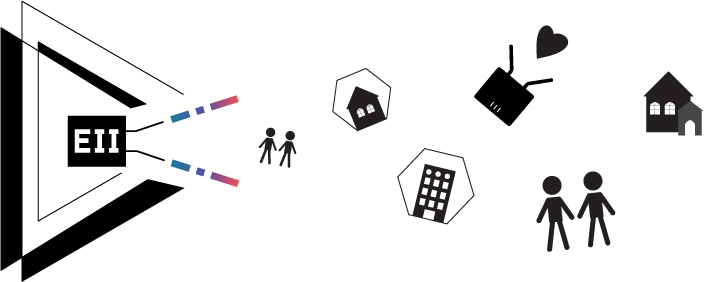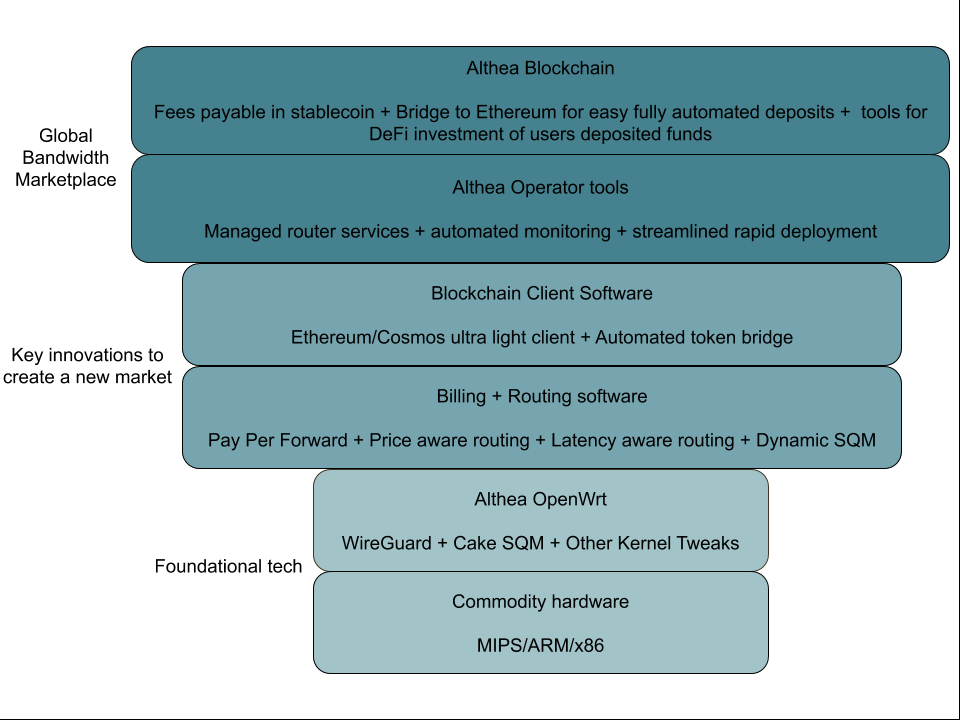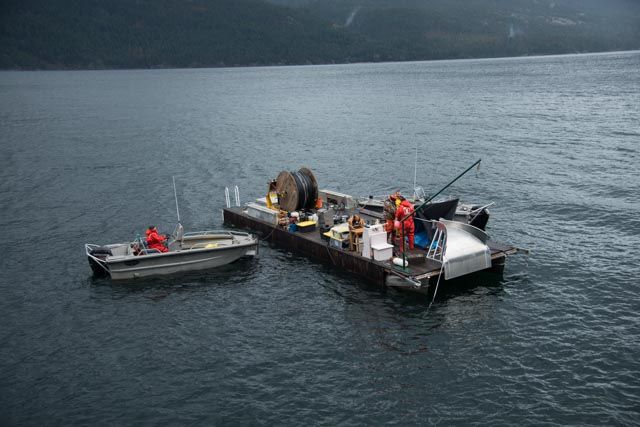Neighbourhood-governed community wireless networks
While the primary focus of the future fibre series is fibre optic based connectivity, our secondary focus is on the role broadband access plays in social and economic community development. Our hypothesis, which we’re finding overwhelming evidence to support, is that reliable and affordable high speed broadband connectivity is essential to the future prosperity and sustainability of rural and remote communities.
That was the first paragraph of our most recent Future Fibre issue that profiled MuralNet and their efforts to improve the Internet connectivity of US based remote indigenous communities.
However it also applies to this issue, and the Detroit Equitable Internet Initiative (EII). While it is also a wireless based Internet provider, their focus on community governance is important, as it helps ground the social and economic development in the priorities and needs of the community itself. While this is an urban ISP rather than a rural one, it demonstrates that these issues are not exclusive, but potentially apply to all communities.
The EII is a result of longstanding community organizing and collaboration, as well as community technology and media programs. For example Allied Media Projects has been active for well over a decade in Detroit and beyond, helping to foster media literacy, and support community driven media organizations and events. They produce the Allied Media Conference, which has been happening for almost twenty years, and they also help connect community projects with funding agencies.
One of the by-products of Allied Media was the Detroit Community Technology Project. Here’s an excerpt from their story:
Allied Media Projects partnered with the Open Technology Institute of the New America Foundation in 2012 to create the Digital Stewards (DS) Program, which trains neighborhood leaders in designing and deploying community wireless networks with a commitment to the Detroit Digital Justice Principles. To date, DCTP has implemented the DS training with leaders from seven Detroit neighborhoods, followed by four Equitable Internet Initiative neighborhoods in both Detroit and Highland Park. DCTP has supported 11 more community groups internationally to adopt and modify the training for their own contexts. As our principled approach and the Digital Stewards program continued to find firm footing in community, new people-based resources and programming grew, aimed at enabling community participation in online economies, education, and safe navigation of online spaces. DCTP formed officially in 2014 to encompass broader community technology education and organizing work and to share best practices.
After many iterations in Detroit and New York, the Digital Stewards Program began to see new life as Gigabit fiber was introduced in the city of Detroit, threatening to widen an already oppressive digital divide. In 2015, DCTP introduced the Equitable Internet Initiative (EII), our attempt to redistribute power, resources, and connectivity to the most marginalized of Detroiters. We began with partners in three neighborhoods: Islandview, North End, and Southwest. As neighborhood-level strategy played out to help bring more Detroiters online in a meaningful way, DCTP shifted focus to also address how Detroiters were impacted by broader systems of data collection and surveillance technologies, both on and offline. How much did folks know about their digital data bodies? How much could they protect themselves? The Data Justice Program was introduced in 2016, just as the city was ramping up promotion of Detroit’s Open Data portal. It quickly blossomed into a vital companion to EII and the work of the Detroit Digital Justice Coalition.
What’s interesting about the EII is the social and cultural infrastructure that is created around it. This isn’t just about giving people (better) Internet access, but rather following through on the social and economic empowerment. Ensuring that they have the necessary skills to be active participants and exercise full agency with the technology and the abilities it makes possible.
Part of the dysfunction of existing telecom and ISP companies is that their success is based upon the ignorance of their users. They depend upon their users to be uninformed, so that they aren’t able to pay attention to things like data quotas and overage charges. They also get away with providing service that is below the speed and quality that they advertise, because their customers do not have the literacy to hold these companies accountable.
It’s refreshing therefore to see a model that mobilizes knowledge throughout the community by creating neighbourhood champions, in this case, Digital Stewards, who can embrace the “each one teach one” model of popular education. No need to have alienating tech support when that tech support can exist within the community, and have as part of its mandate the spread of that knowledge and the creation of more teachers and stewards.
Granted not everyone wants to put in the work to learn technical knowledge and troubleshooting, but the more who do the better the network and the stronger the community.
Similarly this concept of community empowerment also allows for a prioritization so that support goes directly to those who need it.
Digital Steward Karisma talking about who the Equitable Internet Initiative in Detroit chose to prioritize #mozfest pic.twitter.com/m3gQubhFcW
— Maya Wagoner (@mayawagon) October 28, 2017
After all, Internet access is essential and can be the difference between life and death, as we’re now witnessing in this pandemic. Ensuring that it is not only available, but useful, in so far as the knowledge of how to make the most of it is readily available.
Access to the internet is an important tool to addressing inequity. Detriot’s Equitable Internet Initiative is trying to bridge the digital divide in underserved neighborhoods. https://t.co/OarhsAF2zk @yesmagazine @JGabinator #TheWholeStory (from our archives).
— Solutions Journalism Network (@soljourno) August 6, 2018
The community members are responsible for installation. DCTP trains a representative of the partnering organization, who then trains five to seven neighbors to install the equipment. These digital stewards, who Nucera says had no previous technical experience, are responsible for “building the networks.” They mount CPE (customer premise equipment) dishes on top of the homes, which receive a signal from the hubs. Finally, they run cables from the dishes to the routers inside the homes.
Roston, a digital steward, says the work was foreign to him.
“Being a digital steward was completely out of the range of what I usually do,” he says. “I was so used to using the internet— all the software and everything—but I didn’t know how internet networks work.”
So far, he’s helped with getting 19 of the 50 designated households in the Islandview neighborhood online.
Wallace Gilbert Jr. is responsible for recruiting Roston. Gilbert is the assistant pastor of the Church of Messiah, and he’s also a digital steward trainer. He has worked in tech for 30 years and for the past several years has been teaching neighborhood youth to build and repair personal computers to take home. Digital literacy is among the needs of the community that the church provides.
The open secret about technology is that it’s not that complicated or difficult to learn. The key is context and application. While there’s an infinite amount of potential knowledge to know, narrowing that down to a specific task in a specific situation makes that knowledge relatively accessible and easy to transfer. What DCTP has done via their EII can certainly be translated to a fibre optic network rather than a wireless one.
VICE Motherboard produced a mini-doc on the project in 2017 that is worth watching:
Building a healthy digital ecosystem takes time, but the focus on the ecosystem is what makes this project powerful and relevant. We have to look past the technology and focus on the people. It’s not about getting people online, it’s about empowering people to be active participants in their world.
It was so great to see how @DetCommTech launched the #EquitableInternetInitiative to tackle the lack of internet access in Detroit by building their own wireless network, connecting local communities & training locals to become digital stewards, network/project managers #MozFest pic.twitter.com/aGkEOy7vWi
— Chandeep Khosa (@ChandeepKhosa) October 27, 2019
While projects like this are not fast, they provide long term stability when it comes to Internet access. By investing in this kind of local infrastructure and human capacity they will be able to adapt to whatever network conditions or issues arise. While their focus is on wireless today, I would not be surprised if they expanded to fibre in the future.
It’s also encouraging to learn that the concept of the EII is now spreading, with the second EII now established in Kingston NY:
The Equitable Internet Initiative Comes to the Hudson Valley: https://t.co/tpNC2UqYa9
— Lloyd Trufelman (@NYConvergence) March 15, 2020
Radio Kingston Technical Director Kale Kaposhilin was inspired to bring this model—the Equitable Internet Initiative (EII)—to Kingston. "It's powerful the way folks [in Detroit] have come together because no one was coming to save them," Kaposhilin says.
A nonprofit radio station with a social justice agenda, Radio Kingston will build a local wireless network over the next three years to provide low-cost internet service outside the corporate telecom system. Radio Kingston is working with Community Tech NY—the New York chapter of the Equitable Internet Initiative—on bringing EII to the city. CTNY has guided other neighborhoods in New York City and upstate New York with internet access creation and tech knowledge.
The initiative isn't only about giving people internet access, nor does it end with Radio Kingston. Residents also learn how to build and sustain this technology themselves. It's a project owned by the community because it's created and run by the community. A digital stewards training program provides residents with the skills to build and maintain a resilient digital ecosystem.
This is the kind of virus we should be spreading and helping to infect communities everywhere. Worth noting here that one of the advantages that Radio Kingston is able to bring is their radio tower! Neat to see that kind of infrastructure re-purposed for Internet connectivity.
Finally, many of the community Internet initiatives we’ve profiled have produced relevant or interesting resource sections for their community, and the folks at Allied Media are no exception. They’ve got a cool series of zines and guides that are interesting and informative.
For example they’ve helped produce a Community Technology Field Guide, that in particular includes a Neighborhood Network Construction Kit.
There’s also the Detroit Future Media Guide to Digital Literacy, as well as the Opening Data zine (volume 2):
In order to achieve equitable open data practices, DCTP strived for a collaborative, community-driven process where we were not extracting info from people, but teaching & learning together to understand open data.
— DCTP (@DetCommTech) April 16, 2018
Learn more in our Opening Data 2 zine: https://t.co/HGycZWw1Kn pic.twitter.com/WTvRBoNu3x
Part of the purpose of our Future Fibre series is to collect examples, resources, and evidence, that the Internet can be governed and run differently than how it is currently configured (for commercial exploitation). The Detroit Equitable Internet Initiative is an inspiring example that shows a different Internet is possible and desirable.
“Future Fibre” is a recurring series in the Metaviews newsletter where we share some of the research, other models, news, and ideas around community based connectivity.
The series is sponsored by our friends at EasyDNS:

I’ve been an EasyDNS customer for almost 20 years (and I know a number of you are as well based on my recommendation). Mark Jeftovic the co-founder and CEO is a long time friend and Metaviews subscriber. EasyDNS is one of the best service providers on the Internet, and Mark ensures his customers have the benefits of the latest and most secure technology.
Mark also writes a smart newsletter called #AxisofEasy and has just published a fascinating book called “Unassailable”, which we recently reviewed. I’m thrilled that Mark shares my belief in the potential for micro-ISPs and is sponsoring this series as a result.
Here’s this issue’s bonus video:



